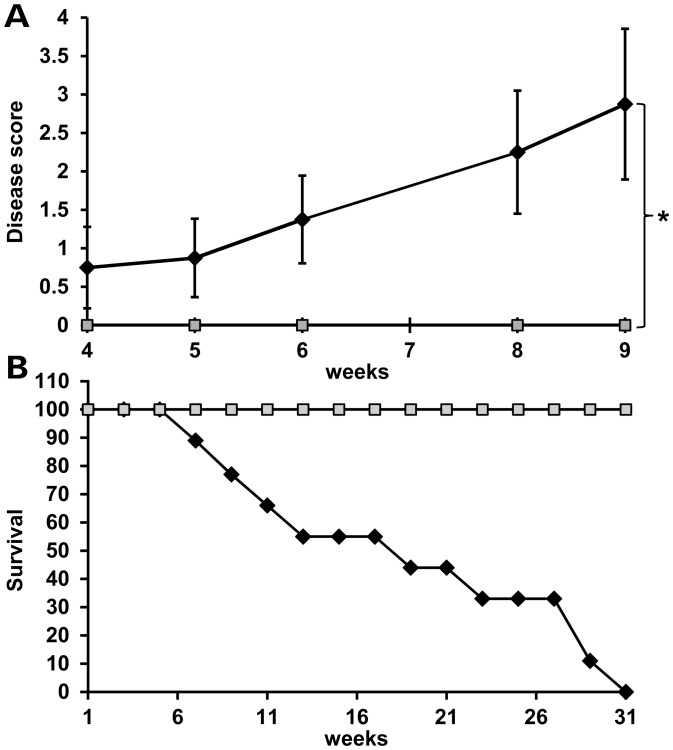Figure 2.
Mice with MeCP2-e1 isoform ablation exhibit neurologic disease and reduced lifespan. (A). Male Mecp2-e1−/y mice (n = 8) (black line) were scored along with control Mecp2-e1+/y male littermates (n = 6) (gray line) at weekly intervals for disease symptoms including matted fur, reduced ambulation, open skin sores, abnormally large abdomen along with hindlimb clasping, forelimb ‘washing’ and lack of body curling in response to tail suspension. Thus, the most diseased mice score ‘7’ while completely healthy mice score ‘0’. Error bars correspond to standard error of the mean (SEM). *P = 0.0197 by independent sample, two-tailed t-test. (B). Survival curve of Mecp2-e1−/y MeCP2-e1 deficient (black line) and WT control male littermate mice (gray line). n = 11 for Mecp2-e1−/y males and n = 9 for WT Mecp2-e1+/y control males.

